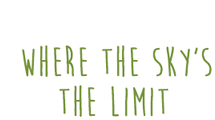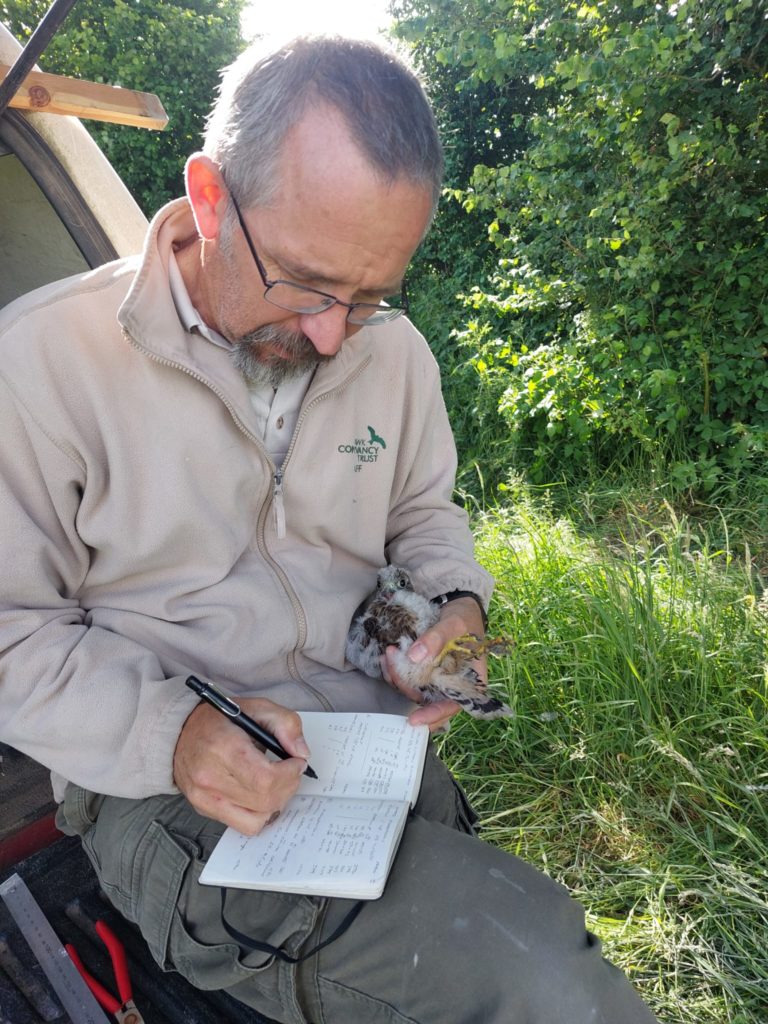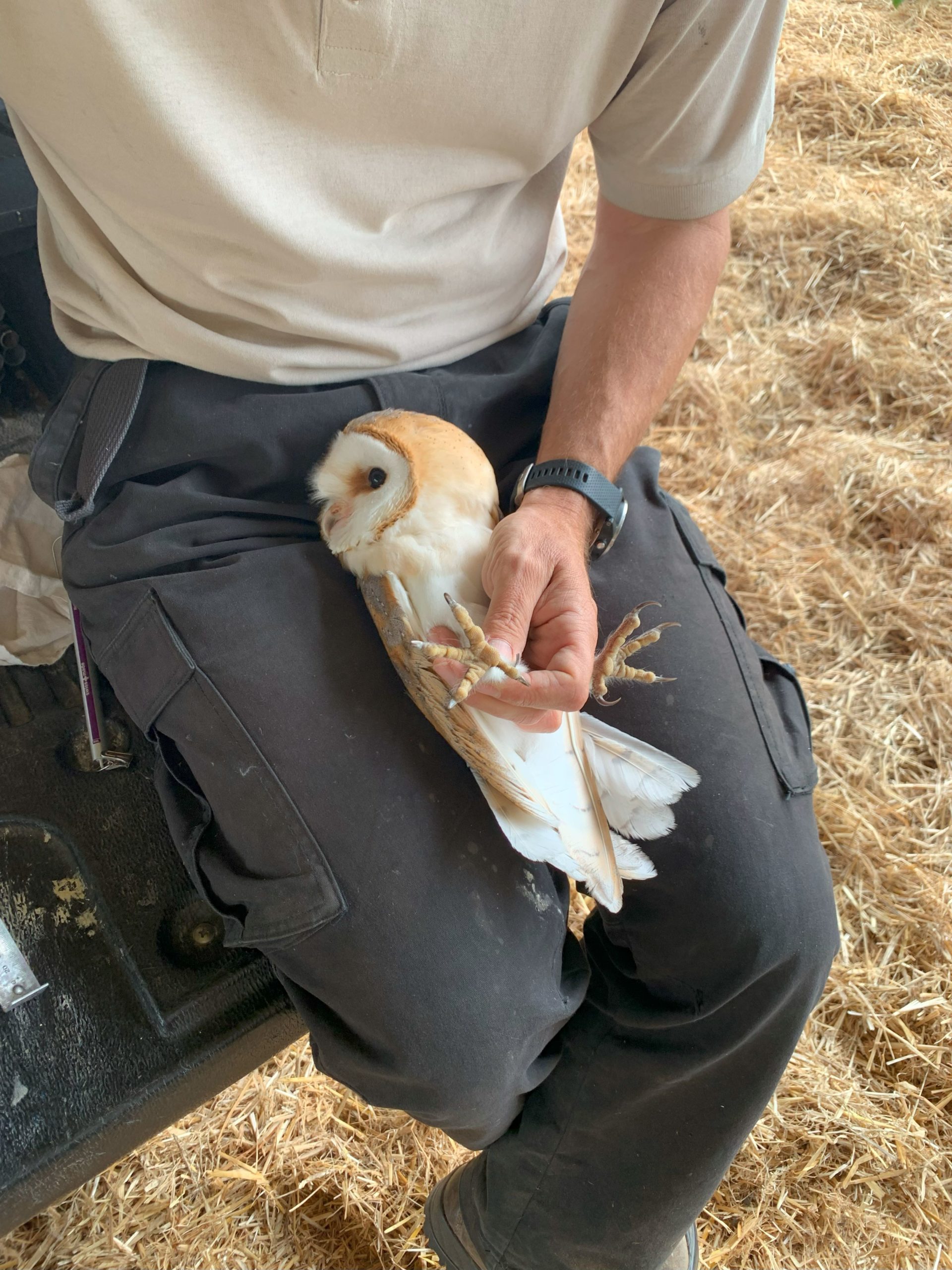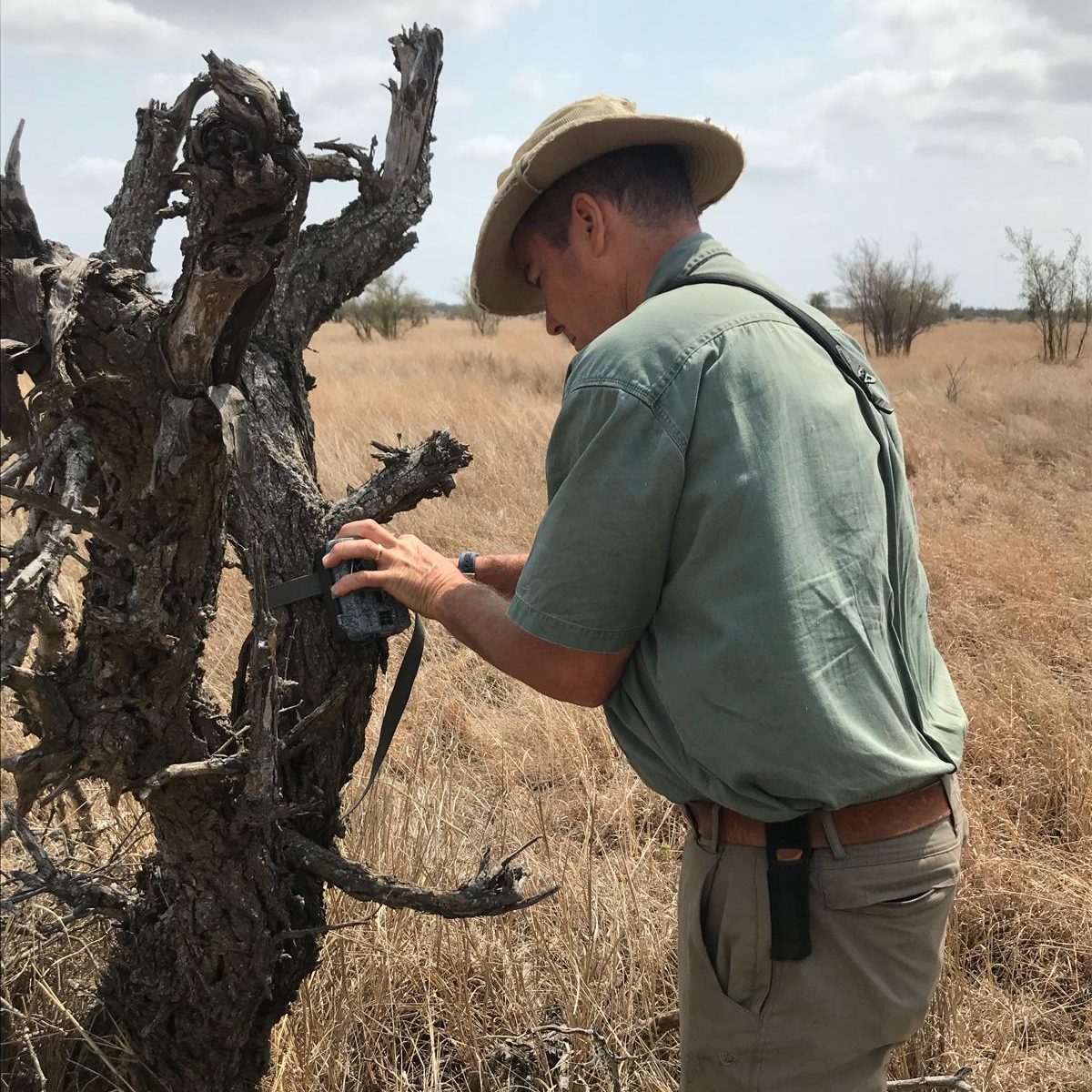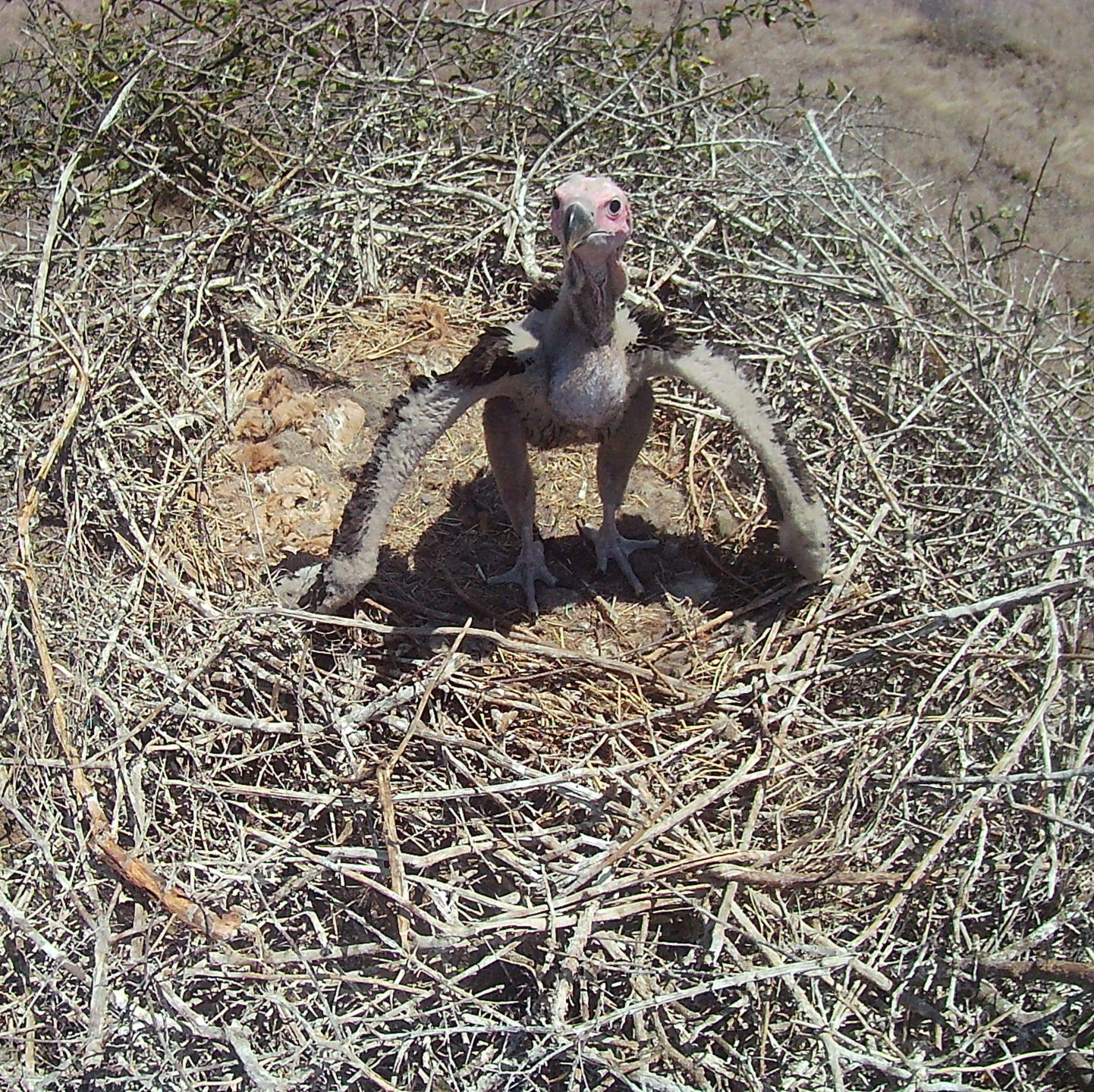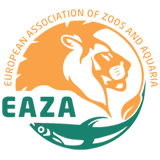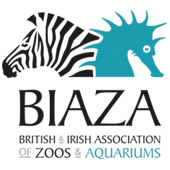The winter months bring a change to our timetable, and with it our flying team of winter birds takes to the skies. On this team is one of our biggest birds – Saxon the Golden Eagle. She is a sensitive girl, and is very particular about who she chooses to work with on our team, so when newest Bird Team member Hugo Wilson was given the opportunity to work with her, it was ‘a dream come true’…
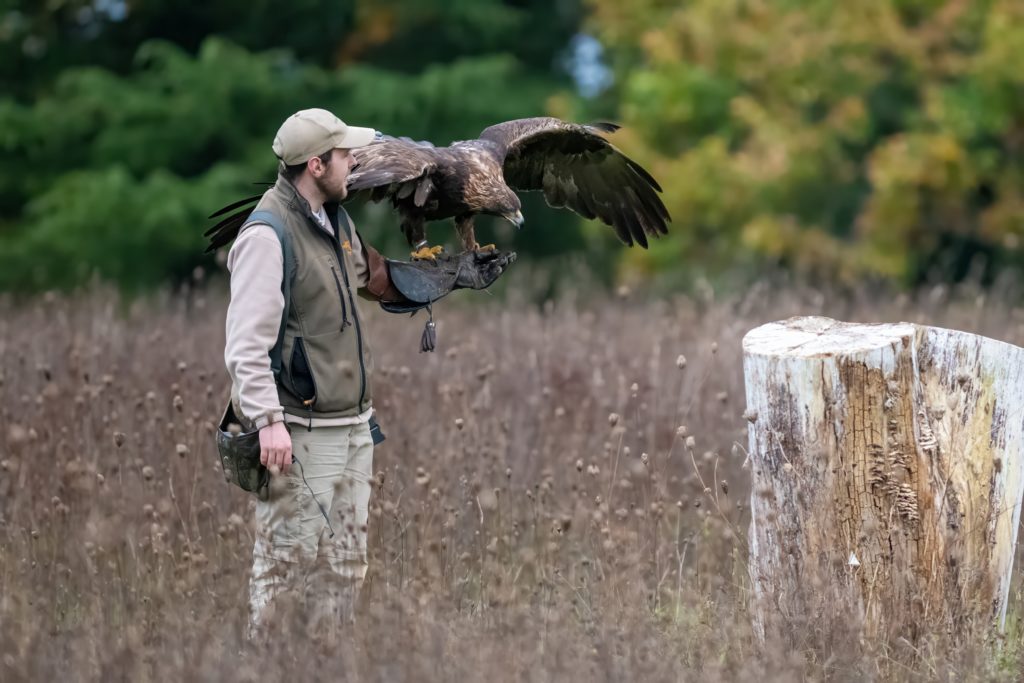
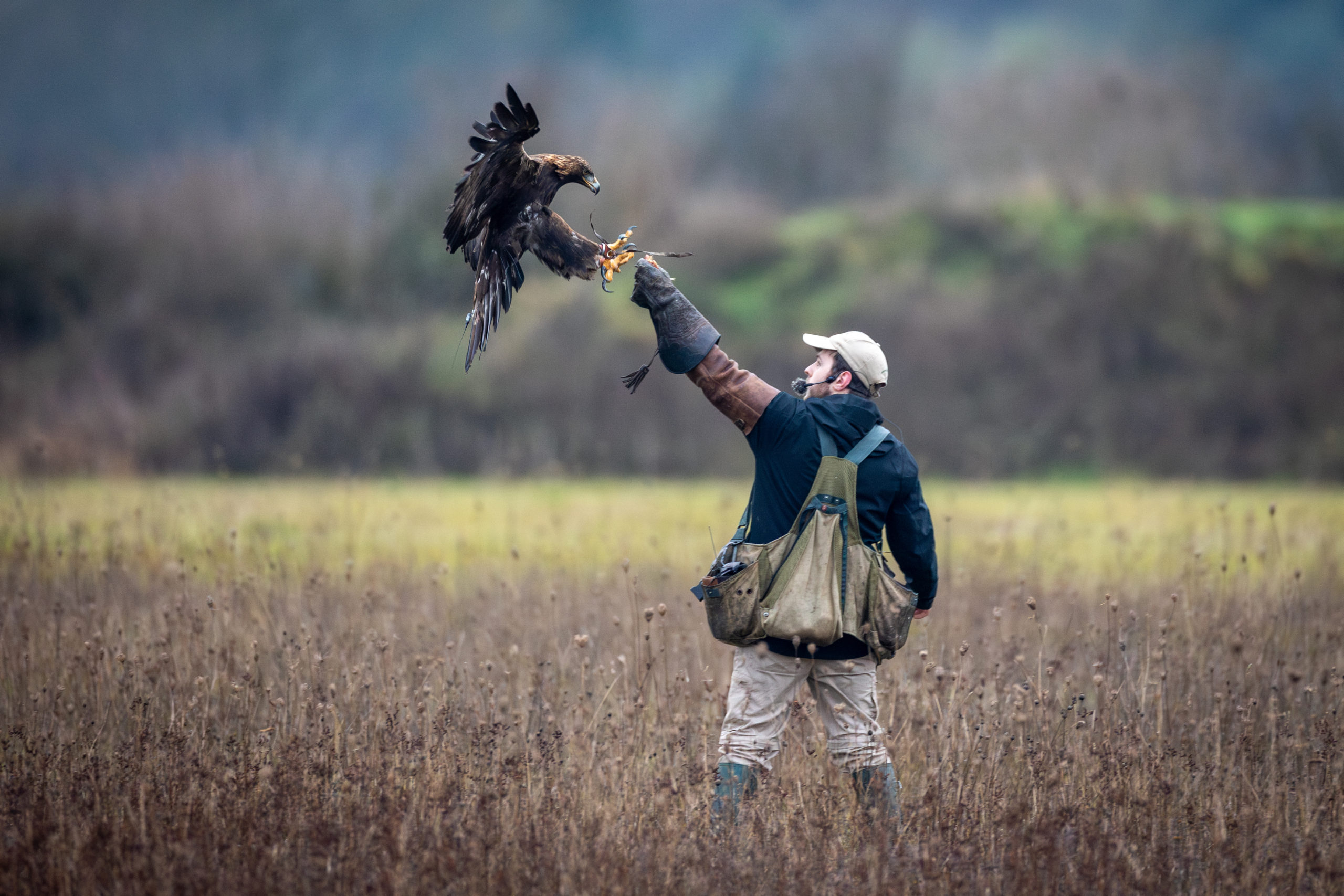
‘I started working alongside Saxon during the closed period last winter – it was a real honour when I was asked by our Head of Flying Birds, Mike Riley, if I’d like to give working with her a go. Saxon is a sensitive bird, and can be choosy about who she wants to work with. Golden Eagles are right up there as one of my absolute favourite species of birds of prey, and I always thought how amazing it would be to work with one. So this really was a dream come true moment!
Saxon’s favourite person on the Bird Team is Cedric Robert. She also has a soft spot for James Knight and Ben Cox, so it was a team effort from these three in the first stages of my working relationship with Saxon. Cedric began by flying her in Reg’s Wildflower Meadow, and I would call her over to my glove to see if she even fancied landing with me. Once she had done that a few times, it was the seal of approval from her to continue. The next step was for James and Mike to work with her, and let me call her in with her dinner. Once we had that down to a T, the next step was to fly her all on my own, with the team watching to make sure it all went well – which it did!
Apart from Kiara, our Stellar’s Sea Eagle, Saxon is the largest bird on our flying team during the winter months. Being such a large bird she is incredibly powerful. She has the crushing strength in her talons estimated to be somewhere between 500-700 PSI (pounds per square inch). To give you come context, that’s roughly similar to the biting power of a lion’s jaw!
That all being said, Saxon is genuinely a really sweet character, and a real pleasure to work alongside. Sometimes, just like all of us, she can wake up in the mornings on the wrong side of the nest! On these days, I am patient and allow her the time she needs until she’s ready, much like me after a coffee. I am in awe of her strength and can feel it on my gloved hand. Even through the protective leather, I can feel her power. I definitely have a healthy respect for her power and size, and absolutely love working with her.
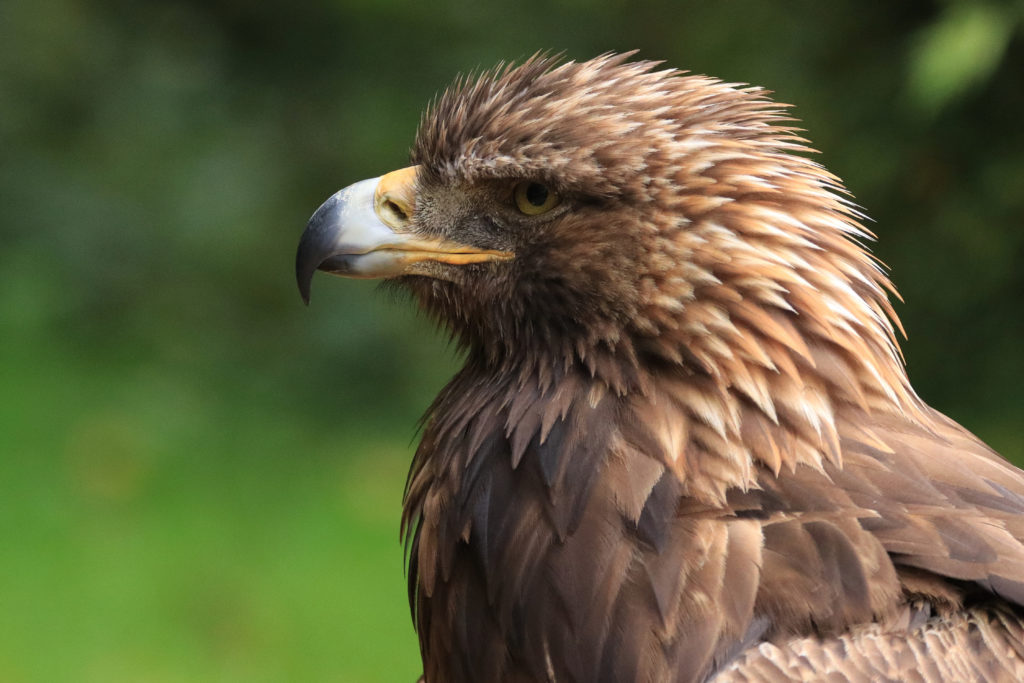
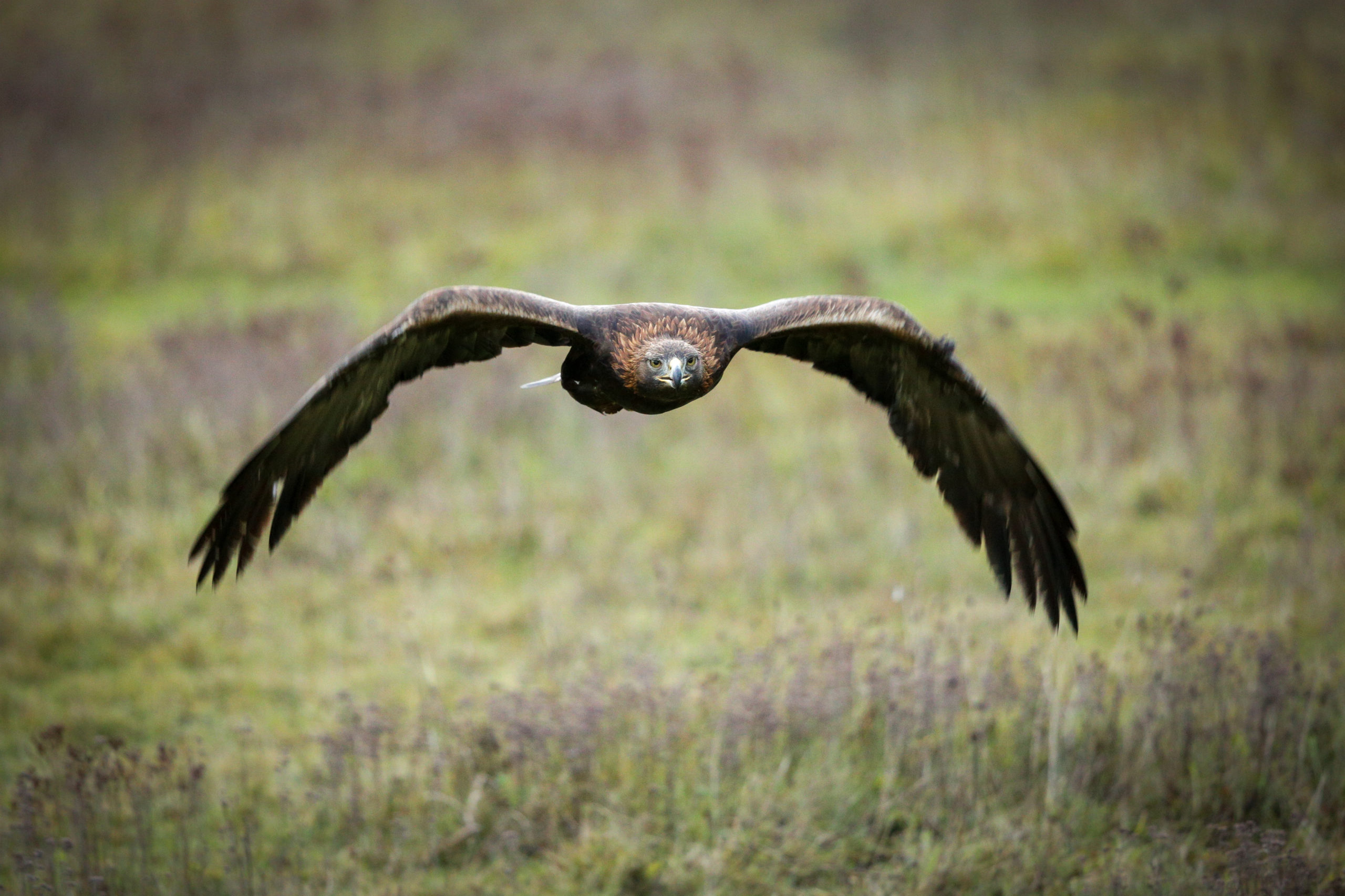
Saxon is one of the oldest birds of our team, at an amazing 33 years old. Golden Eagles can soar at incredible heights, but by the time she joined the Trust team at 20 years old she has already established her flying style, and therefore she does fly slightly differently to other Golden Eagles. Seeing her take off over Reg’s Wildflower Meadow is an amazing chance to see this species up close – especially as the sun just begins to set!
If you wanted to spot a Golden Eagle in the UK, heading up to Scotland would be your best bet. However, this may change in years to come. The Eagle Reintroduction Project that Dr Matt Stevens, our UK Projects Manager, has consulted on is looking at the potential of reintroducing these amazing birds across other areas in the UK. Watch this space for more updates on this exciting proposal!’

